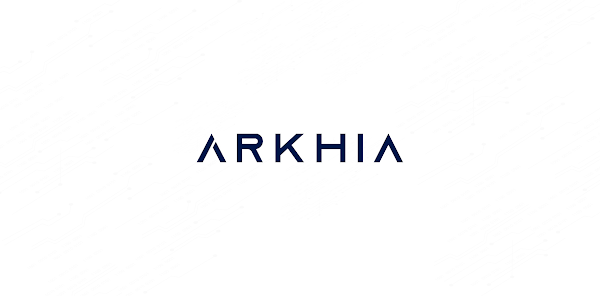Editor’s note: Today’s blog discusses efforts by Arkhia, the organization developed by BCW Group, to provide Infrastructure-as-a-Service (IaaS) and Web3 backend solutions for blockchain & DLT developers. It is the first of three posts.
BCW is a Web3 venture studio and enterprise consulting firm serving enterprise clients who want to integrate existing products or otherwise branch into the Web3 space. In this first of a three-part blog series, we will look at how BCW products use decentralized technology on Google Cloud.
BCW provides companies with an arsenal of support services that include consulting, technical, and go-to-market. This ensures our customers’ early and ongoing success in accommodating the sophisticated demands that new entrants into the space face.
Arkhia and the Hedera Network
The first product outlined in this series, Arkhia, focuses on Hedera network infrastructure. Hedera has seen some of the largest inflows of Web3 developer activity over the past several months, which Arkhia is poised to serve with infrastructure and API solutions.
For at least 15 years, the Web2 space has been dominated by traditional CRUD or central data storage applications. These applications worked well enough and were a decidedly significant improvement over the slow and rigid server structures they replaced. With the rise of Web3, however, a new paradigm in assets, computing, and security has arisen offering new forms of human interaction. As with any new paradigm, new hurdles have emerged that can inhibit adoption, such as growing hardware demands, increased need for reliability from relatively new protocols and codebases, and a lack of consistent definitions and access points.
To mitigate these challenges, Arkhia provides a gateway and workbench for aspiring Web3 developers and enterprises to access the underlying infrastructure of decentralized ledger technology (DLT). For example, Arkhia’s Workbench tool lets builders instantly view data schemas on the Hedera mirror node. The Watchtower tool enables subscribing to Hedera Consensus Service (HCS) through WebSockets by automatically translating HTTP2 to HTTP1, a critical functionality for higher-end development goals. Additionally, Arkhia provides enhanced APIs such as streams, subscriptions, and queries through the HCS gRPC, REST API, and JSON RPC Relay.
A fundamental aspect of our offerings is the use of Google Cloud products, which support the ability to build at-scale without compromising the principles of Web3. Pairing product process and service selection with Google Cloud technologies has empowered Arkhia to apply successful principles from the Web2 world to this new decentralized model of interaction.
Leveraging Google Cloud data services
The robust and wide ranging data services on Google Cloud, such as BigQuery, Dataflow, and Airflow, along with core infrastructural offerings such as Cloud Load Balancing and Cloud Storage, have enabled Arkhia to build out a highly scaled, wide reaching application that transforms a DLT into a data lake. This merges both the worlds of analytics and observation with participation, meeting the demands of internal and externally oriented strategies.
When viewing the customer journey, we find that a good DLT use case is nested in sound data strategy. In considering how to apply data strategy or blockchain strategy, we must consider the clients’ needs for specific use cases. Anyone familiar with design thinking frameworks will find this first step a no-brainer. Most importantly, we must determine how data will fit into that strategy.
When thinking about our customers, we tend to think of data in terms of external versus internal posturing. With external posturing, data is proactively applied when making decisions concerning customer success and marketing efforts in order to cultivate the initiatives and businesses of our clients. In an internal posture, data is applied to accommodate digital transformations, regulatory compliance, and optimization processes.
Building a DLT posture is similar. When we think externally, our customers begin to see blockchain as a core component of products and services such as payment rails, remittance services, exchanges (both DEX and CEX), and proof-of-reserve systems – with so many more to list.
Thinking internally, we often have customers looking to high-performance applications to service their organizations as mechanisms to reduce cost between departments and/or create CRM or employee incentive applications. It should be noted that the lines between external and internal thinking are often initially drawn between private and public chains. By making Google Cloud an inextricable part of its operations, Arkhia’s flexible set of tools allows clients to blur these lines and reduce stack.
Arkhia meets both postures simultaneously by creating access to the unique service layers of Hedera. By building a workbench of tooling around core out-of-the-box Hedera Hashgraph services such as HCS, Hedera Token Service (HTS), and the mirror node layers, access points for data and transactions are merged. This also enables technology teams to build effective technologies and strategies as they venture into the DLT wilds.
The Arkhia team leverages Google Cloud to mitigate challenges that arise from nascent code and libraries in DLT and creates a stable platform on which products can be built.
The collaboration between Google Cloud and Arkhia addresses concerns about the ubiquity of cloud technologies concerning the growing conversations on open ledgers (e.g. Bitcoin, Ethereum, etc.) and the privilege of anonymity which they ostensibly support. In Hedera’s case, there is a tolerance, if not an expectation, that known parties handle the infrastructure, which is important in data systems.
BigQuery, Billing, and Pub-Sub offerings lay the groundwork for the Arkhia team to investigate node-as-a-service offerings, highly scaled JSON-RPC deployments, and even independent ancillary services that can speed up builds, allow developers to compose Hedera services, and allow for further application-level flexibility.
As BigQuery expands the possibilities for the world of Web3 through ETL initiatives and data ingestion, Arkhia ensures that users can move forward confidently regardless of high-storage-intensive paradigms that are typical to the DLT ecosystem. From a business management perspective, BigQuery eliminates the need for the overhead of a high-cost infrastructure because it provides the opportunity to stream and consume blockchain data in near real-time for decentralized apps (dApps) and other services. It does all this with real-time analytics on all kinds of data to increase and improve both internal and external insights.
For business managers at Arkhia who work in the DLT IaaS space, Cloud Billing provides several improvements. Controlling billing with a detailed overview of services, costs, and computation/storage units can give managers the critical edge they need to not just survive, but thrive. Arkhia uses Google Cloud’s sophisticated features to adequately manage its scale and costs.
A comprehensive suite of APIs and Pub/Sub offerings
Google Cloud also has a comprehensive suite of APIs and Pub/Sub offerings for baked-in functionality, enabling quickstart POC’s to rapidly build and iterate at the speed of Web 3 innovation. Due to a high level of internal networking sophistication, Pub/Sub tools integrate easily with services such as BigQuery and Google Kubernetes Engine to reduce development time and tooling for real-time blockchain data. Using Google Cloud’s Pub/Sub to improve data streaming performance between data systems and clients is attractive to clients who want high-availability, security, and performance from data that is sensitive to time and accuracy.
Google Cloud’s computing and services empower platforms such as Arkhia to rapidly build scalable and stable infrastructure on the rapidly changing states of blockchain environments. As a greater number of firms transition their operations to environmentally sustainable tools that support Web3 functionality, Google Cloud will assist infrastructure developers in maintaining an ethos of decentralization.
Finally, Google cloud’s commitment to sustainability allows Arkhia to participate in a carbon-neutral decentralized service without violating the core values or benchmarks established by the curators of the Hedera protocol.
As we continue to combine principles of data strategy, practice, and capabilities, we see Google Cloud’s offerings as a critical piece of tooling for our system. From end-to-end, Arkhia and Google Cloud seek to build decentralized services for our clients and customers while supporting developers who grapple with the unique challenges of DLT and blockchain.
Source : Data Analytics Read More

